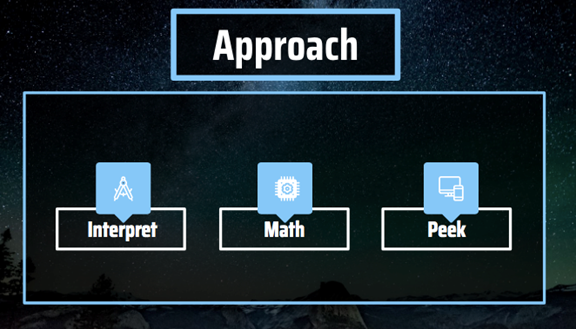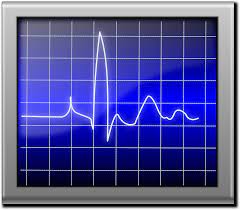ECG interpretation is a core and fundamental skill of emergency medicine. Emergency physicians are expected to provide expert ECG interpretation quickly in a busy emergency department environment and initiate emergent and life-saving interventions base on those interpretations.
Mistakes in ECG interpretation can have detrimental consequences and ultimately result in patient harm. A Canadian study published in the European Heart Journal in 2008 examined patients from 51 hospitals included in the Canadian Acute Coronary Syndrome registry that had been hospitalized with ACS, and also had an interpretable initial ECG. Essentially what they found was when there was disagreement between the core lab and the local hospital regarding the ECG interpretation, that these patients were less likely to receive acetylsalicylic acid (ASA), heparin, and ultimately reperfusion therapy. Additionally, after adjusting for other validated prognostic factors, site-unrecognized ST-elevation was independently associated with higher 1-year mortality (OR of 2.21)
So knowing that our interpretations matter, how competent are physicians as a whole at the interpretation of ECGs? This question was recently investigated and answered in the fall of 2020 and published within JAMA.2 They completed a systematic review and synthesized all the available literature on physician accuracy of ECG interpretation. They included 78 studies with more than 10000 participants. Overall the pooled accuracy was 42% among medical students, 56 % among residents, 69% among practicing physicians, and 75% amongst cardiologist and cardiology fellows. Although we do see that performance improves with training, these findings suggest that ECG interpretation deficiencies exist for all levels of training.
This begs the question if literature suggests that there are deficiencies in our skills set, and what we do is critical, can perhaps the computer interpretation help us and improve our interpretation skills?
How Computer ECG Interpretation works
The acquisition of data from the patient to the final computer readout is a complex pathway that occurs rapidly at the bedside.
An overview of the ECG signal acquisition pathway is paramount to a better understanding of how these programs work, and this can be grossly simplified into three steps.
-
- SIGNAL ACQUISITION:
- Leads are placed on the patient. As inputs, the machine receives patient age and sex. No further clinical history or physical examination is provided or input into the pathway.
- This step is one of the most crucial steps of the process as any errors at this stage can have unintended and downstream consequences. Such errors include:
- Patient movement leading to the increased artifact
- Or inadvertent lead reversal or misplacement.
- SIGNAL ACQUISITION:
-
- DATA PROCESSING:
- The incoming analog electric signals are digitized.
- From there this digitized signal undergoes a series of steps to process it and make it presentable for the computer interpretation algorithm.
- These steps include:
- Noise filtering and elimination of artifact.
- ECG measurements are performed.
- Reliable measurement of rate, axis, and intervals.
- DATA PROCESSING:
-
- COMPUTER INTERPRETATION:
- The processed data can then be passed through a series of algorithms that ultimately results in a final computer output and interpretation.
- These computer interpretation algorithms are proprietary and vary depending on which software is being utilized.
- COMPUTER INTERPRETATION:
In fact, these computer interpretations can produce quite varying results. The algorithms in which they employ are not standardized amongst providers. There is limited collaboration amongst creators, and the algorithms may be tested against limited populations not necessarily representative of the local population in which they are utilized.
The aforementioned issues were reviewed in detail in 2017 in the Journal of the American College of Cardiology by Dr. Schlapfer and the late Dr. Wellens.3 They raised several concerns regarding the state of these computer interpretation programs, and additionally, they also recommended improved training for physicians. And so as part of these recommendations, we will proceed from here to further unravel the strengths and limitations of the computer4computer are as follows:
Strengths and Limitations of the Computer ECG Interpretation
The primary strengths of the computer interpretation are as follows:
-
- RATE, AXIS, AND INTERVAL CALCULATION:
- In a good tracing, in the absence of an artifact, the computer fairly reliably calculates rate, PR interval, QRS duration and QTc
- RATE, AXIS, AND INTERVAL CALCULATION:
-
- NORMAL, AND SINUS RHYTHM DETECTION:
- With exception5, the computer is good at the identification of sinus rhythm6, and the identification of normal ECGs.7 Beyond sinus rhythm, the machine is much less reliable and rhythm interpretation should be interpreted cautiously.
- Additionally, a computer interpretation of normal does not replace intense scrutiny by an over-reading physician at this time.
- NORMAL, AND SINUS RHYTHM DETECTION:
The primary limitations of the computer with some relevance to emergency physicians are as follows:
-
- ATRIAL FIBRILLATION:
- Computer interpretation algorithms in their present form have been shown to overcall atrial fibrillation, and in some cases lead to unnecessary consultation, admission, and pharmacologic intervention.8,9
- Emergency physicians have been shown to fall victim to this phenomenon. Cardiologists who clinically integrate bedside information, more often correct an erroneous computer interpretation.4
- ATRIAL FIBRILLATION:
-
- STEMI:
- Although some studies have shown good specificity for the computer in the diagnosis of STEMI,10 more recent work has highlighted it’s poor sensitivity.11 In addition to poor sensitivity, the computer will routinely miss STEMI equivalents and subtle signs of ischemia.
- STEMI:
-
- QTc:
- It has been noted in the literature that the widely adopted Marquette 12SL, although appropriately calculating the QTc interval, will often fail to include an interpretative statement in the setting of a prolonged QTc value.12
- Always visually inspect the QT interval, and then take a look at the reported QTc interval. Consider manual calculation if clinical concern.
- QTc:
-
- PACEMAKER DETECTION:
- The computer has been shown to struggle with pacemaker detection.13
- PACEMAKER DETECTION:
What does the Literature say: Do Computer-Based ECG Interpretations Affect Our thinking?
From the literature, there have been a number of small and heterogeneous studies examining the impact of the computer on our decision-making.14-16
Although difficult to draw any firm conclusions, I think there is a trend that for experienced interpreters; the computer makes them much stronger. However for novice interpreters, computer interpretation can lead you astray, and you may fail to recognize help even when it’s provided.
Suggested Approach for Use of Computer ECG Interpretation
Not willing to completely dismiss any and all help that the computer provides. Find below a suggested approach for the incorporation of the computer algorithm into your own practice. This method was adapted from the work of Dr. Ken Grauer.17
The most important aspect is to not look at the computerized report initially and to cover it up. From there complete the following:
-
- INTERPRET
- Interpret the ECG as you normally would.
- Use whatever standard approach you are comfortable.
- INTERPRET
-
- MATH
- Utilize the computer for its interval calculation prowess. It will make you faster.
- MATH
-
- PEEK
- Finally, review the computer interpretation, and systematically review each interpretive statement provided by the computer.
- This is where the potential lies for the novice interpreter, is that it provided a second opinion and systematically makes you review your own interpretation.
- PEEK

References
1. Vijayaraghavan R, Yan AT, Tan M, et al. Local hospital vs. core-laboratory interpretation of the admission electrocardiogram in acute coronary syndromes: increased mortality in patients with unrecognized ST-elevation myocardial infarction. Eur Heart J. 2008;29(1):31-37.
2. Cook DA, Oh SY, Pusic MV. Accuracy of Physicians’ Electrocardiogram Interpretations: A Systematic Review and Meta-analysis. JAMA Intern Med. 2020.
3. Schlapfer J, Wellens HJ. Computer-Interpreted Electrocardiograms: Benefits and Limitations. J Am Coll Cardiol. 2017;70(9):1183-1192.
4. Anh D, Krishnan S, Bogun F. Accuracy of electrocardiogram interpretation by cardiologists in the setting of incorrect computer analysis. J Electrocardiol. 2006;39(3):343-345.
5. Litell JM, Meyers HP, Smith SW. Emergency physicians should be shown all triage ECGs, even those with a computer interpretation of “Normal”. J Electrocardiol. 2019;54:79-81.
6. Shah AP, Rubin SA. Errors in the computerized electrocardiogram interpretation of cardiac rhythm. J Electrocardiol. 2007;40(5):385-390.
7. Hughes KE, Lewis SM, Katz L, Jones J. Safety of Computer Interpretation of Normal Triage Electrocardiograms. Acad Emerg Med. 2017;24(1):120-124.
8. Bogun F, Anh D, Kalahasty G, et al. Misdiagnosis of atrial fibrillation and its clinical consequences. Am J Med. 2004;117(9):636-642.
9. Lindow T, Kron J, Thulesius H, Ljungstrom E, Pahlm O. Erroneous computer-based interpretations of atrial fibrillation and atrial flutter in a Swedish primary health care setting. Scand J Prim Health Care. 2019;37(4):426-433.
10. Cloutier JM, Hayes C, Ducas J, Allen DW. Reducing Delay to Treatment of ST-Elevation Myocardial Infarction With Software Electrocardiographic Interpretation and Transmission (SCINET). CJC Open. 2020;2(3):111-117.
11. McLaren JTT, Kapoor M, Yi SL, Chartier LB. Using ECG-To-Activation Time to Assess Emergency Physicians’ Diagnostic Time for Acute Coronary Occlusion. J Emerg Med. 2021;60(1):25-34.
12. Garg A, Lehmann MH. Prolonged QT interval diagnosis suppression by a widely used computerized ECG analysis system. Circ Arrhythm Electrophysiol. 2013;6(1):76-83.
13. Poon K, Okin PM, Kligfield P. Diagnostic performance of a computer-based ECG rhythm algorithm. J Electrocardiol. 2005;38(3):235-238.
14. Goodacre S, Webster A, Morris F. Do computer generated ECG reports improve interpretation by accident and emergency senior house officers? Postgrad Med J. 2001;77(909):455-457.
15. Morisbak B, Gjesdal K. [Computer-based interpretation of ECG–guiding or misleading?]. Tidsskr Nor Laegeforen. 1999;119(23):3441-3444.
16. Brailer DJ, Kroch E, Pauly MV. The impact of computer-assisted test interpretation on physician decision making: the case of electrocardiograms. Med Decis Making. 1997;17(1):80-86.
17. Grauer K. ECG Blog #126 (Computerized ECG Interpretations – DeWinter – HyperK). https://ecg-interpretation.blogspot.com/2016/05/ecg-blog-126-computerized-ecg.html. Acccessed May 8, 2021.




Credit to Zach MacDonald (!) for his review of Computer-based ECG Interpretation use in the ED. The topic is challenging and controversial — but extremely important because of overreliance by too-many clinicians who simply fail to appreciate major weaknesses of the computer interpretation (especially inability to accurately assess rhythms other than sinus — and overlooking subtle-but-important patterns of acute ischemia and infarction).
Regarding the above cited assessment of physician “competency” for interpreting ECGs — while I don’t doubt the less-than-stellar conclusions (ie, suboptimal “competency” even among cardiology fellows and practicing cardiologists!) — I’ll comment from perspective of having taught this subject area nationally to clinicians of all specialities over my 30-year academic career: The teaching of ECG interpretation (and assessment of competency in medical school and residency training programs) lacks both standardization, as well as adequate means for verification. It is just incredibly difficult to ensure and maintain competency in ECG interpretation in this very complex discipline (without even entering into discussion of the different degrees of competency that might be appropriate for primary care vs emergency medicine vs cardiology practice).
I am gratified that Dr. MacDonald has noted my work and my suggested approach for optimal use of the Computerized ECG report. Since available space in this publication did not allow citation of my work (only 13 of the 17 cited references are listed below) — I will add this on-line link to my work — tinyurl.com/KG-Blog-207 — which notes details of my work, as well as some of my publications in the area.
Great article